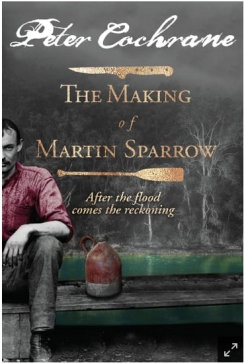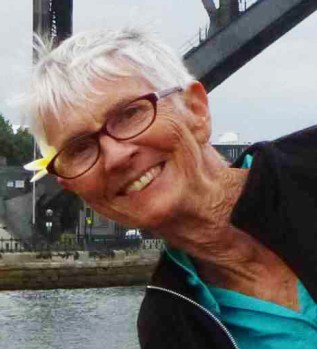I am continuing with my response to the novel The Making of Martin Sparrow and learning about history through fiction. Reading the book, I entered into the world of settlers on the Hawkesbury River in southeastern Australia at the time of the flood of 1806.
Colonies are built on dreams, but some dreams threaten ruin 
This was the single sentence on the first page of The Making of Martin Sparrow after the title page.
Women were only minor characters in The Making of Martin Sparrow. Evil and not so evil men dominated. Many settler men met their end through the harsh environment – wild boars, wild rivers, a prick from a platypus, or disease. Others through retribution by indigenous men, who selectively killed settlers who had massacred their people.
The ending of The Making of Martin Sparrow didn’t quite satisfy. It was a little too neat. Yet the book had to end sometime. I had to leave that time and place and return to the present day.
Here are a few samples of the beauty of the writing in The Making of Martin Sparrow about a harsh violent history of the forcible settling of Australia by convicts and their keepers.
It was almost sunset and the clouds to the north sat flat, as if on a straight edge, and they were lit bright pink on the underside and the sky beneath was the palest petal blue. (p. 297)
I’ve seen those clouds and that sky.
Or they might not find them at all and instead find Dan’s musket wedged in a tree, draped in the deathly grey of flood-borne shrubbery, the floodwaters a master of random arrangement. (p. 404)
I’ve seen shrubs, trees, stranded, washed up along the banks by rising rivers after they’ve subsided.
Just one thing can shape your whole life. (p. 423) Quiet insights in the dialogue, especially from the character Cuff, are sprinkled throughout the book. Somehow they become believable, although the reader may doubt the character’s ability to reflect.
The author, historian Peter Cochrane comments in the Afterword
The Making of Martin Sparrow is a work of fiction in which the documented past provides points of departure into an imagined world. (p. 447)
Can the reader find historical truth through fiction?
Are novels a more powerful and accessible way to learn about history and other cultures?
What do you think?
Your comments are most welcome. Thank you.


Sounds like an experience you are trying to create in your novel! 🙂
LikeLike
Yes but I don’t have the depth of background of Peter Cochrane, who is an historian. thanks for the comment
LikeLike